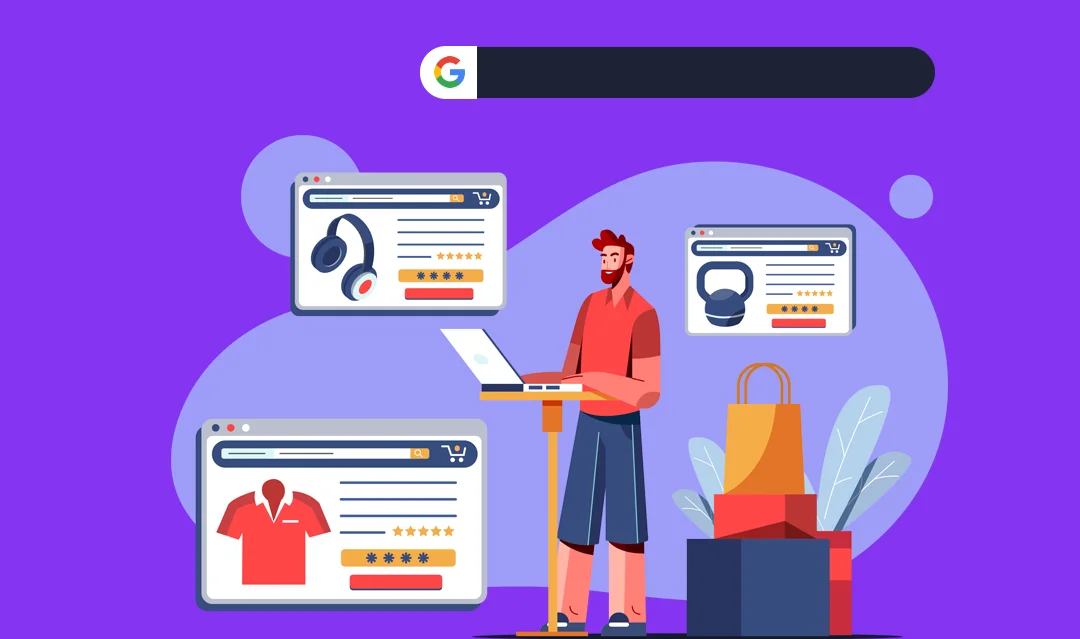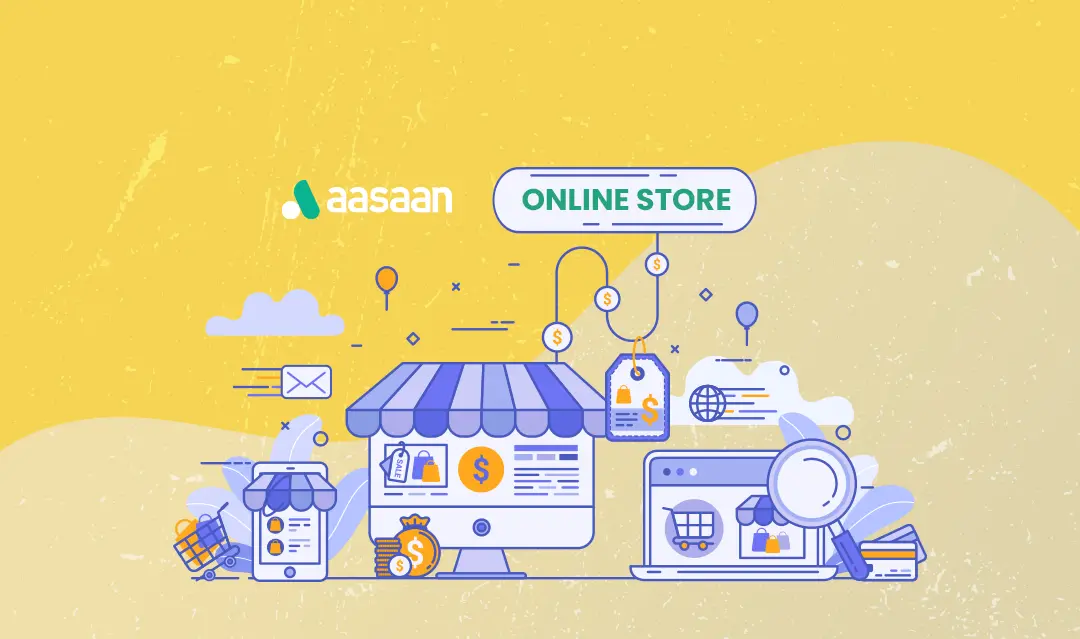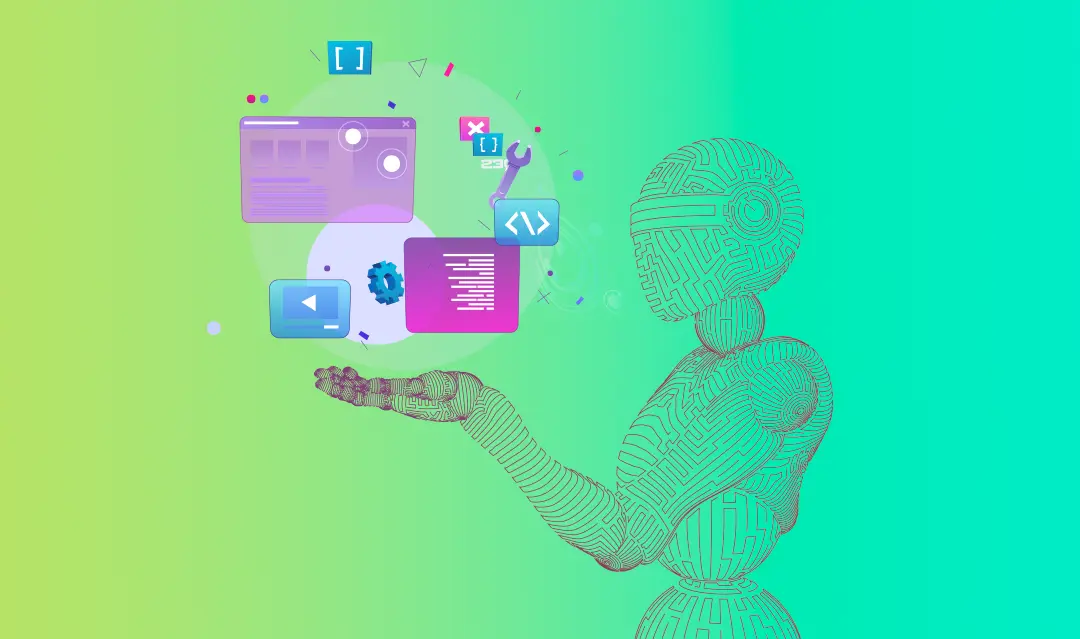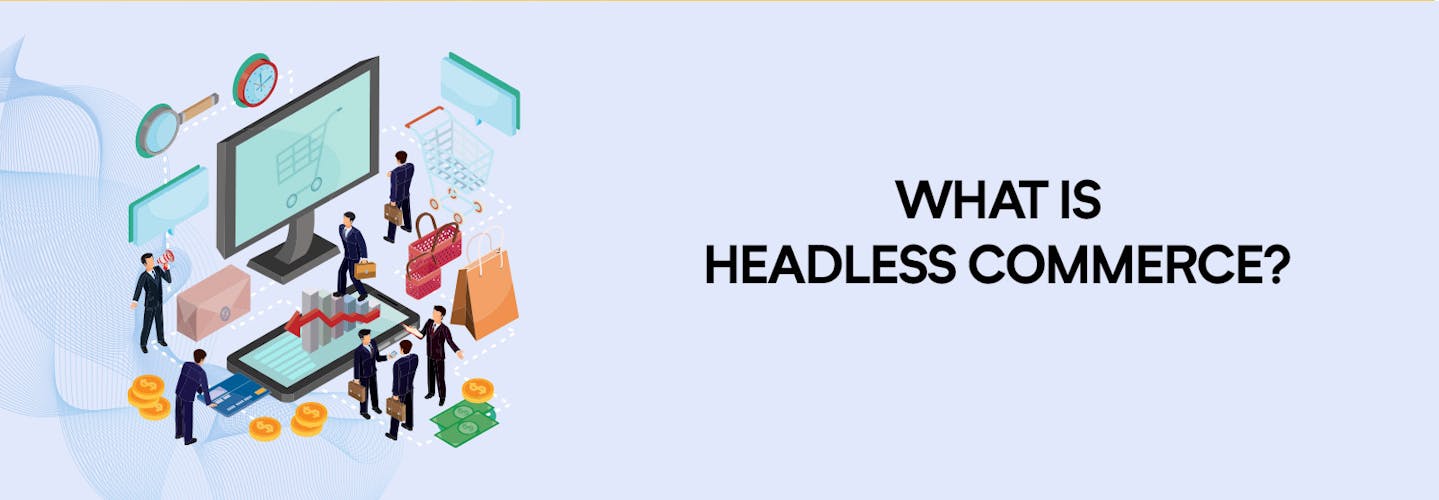
Ultimate Guide to Headless Commerce: Unlock the Power!
In today’s fast-paced digital world, businesses are constantly looking for ways to adapt and stay ahead of the curve.
One such innovation is headless commerce, empowering businesses to create seamless, customizable, and engaging shopping experiences.
In this ultimate guide, we’ll explore everything you need to know about headless commerce, its benefits, and how to implement it.
What is Headless Commerce?
A headless commerce system is for modern businesses that need commerce capabilities through API-driven experiences via CMS, DXP, applications, devices, or custom front-ends.
Headless commerce enables brands to create ecommerce experiences using powerful APIs. The SaaS platform is extensible and connectable to other environments to enhance efficiency and remove issues.
You can now integrate your most complex ecommerce needs into beautiful creations using customized React.js, angular websites, and CMS. It is about giving IT teams relative control over infrastructure connectivity.
In a SaaS platform, the number of available API calls is critical to ensure proper operation that includes:
- High-volume or unlimited API calls
- Well-documented developer documentation
- Multiple endpoints
- Focus on API development in product road mapping.
What is Traditional Commerce?
The most traditional ecommerce model is one where online businesses use a monolithic strategy that includes complete platform control by IT.
This is useful when the front-end experience requires extreme customization. Also, traditional ecommerce platforms package everything, making it easier to set up the system and use pre-installed tools.
Monolithic strategies, however, result in longer time-to-market and higher development costs, which can slow down innovation.
It also reduces expansion in merchandising, customization, and design options. With traditional ecommerce, integration with current systems can be difficult. This led to the switch to headless ecommerce.
Headless Commerce Vs Traditional Commerce
Headless commerce and traditional commerce are two different approaches to eCommerce. Here are the key differences between them:
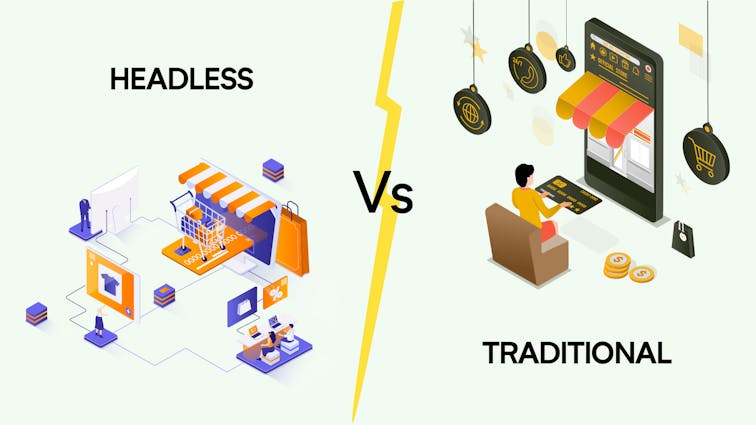
Headless Commerce:
- Separates the frontend and backend of an online store, providing flexibility to create unique user experiences while maintaining a robust backend infrastructure.
- Enables businesses to use powerful APIs to create eCommerce experiences via CMS, DXP, applications, devices, or custom front-ends.
- Offers high-volume or unlimited API calls, well-documented developer documentation, multiple endpoints, and a focus on API development in product road mapping.
- Provides IT teams with relative control over infrastructure connectivity.
- Allows businesses to integrate their most complex eCommerce needs into customized React.js, angular websites, and CMS.
Traditional Commerce:
- Follows a monolithic strategy where the online business has complete platform control by IT.
- May be useful when the frontend experience requires extreme customization.
- Limits merchandising, customization, and design options.
- Can result in longer time-to-market and higher development costs, which can slow down innovation.
- Can be challenging to integrate with current systems.
Overall, headless commerce is a more flexible and scalable approach that allows businesses to create unique and engaging eCommerce experiences while maintaining a robust backend infrastructure.
In contrast, traditional commerce may be suitable for businesses with specific customization needs but can limit innovation and result in higher development costs.
How Headless Commerce Can Resolve Obstacles?
1. Multi-channel integration:
This helps businesses integrate disparate channels and seamlessly deliver content to each.
Now, there is no need to manage experiences with separate tools and processes. Let the aasaan app help you integrate these experiences and move your business gear toward headless ecommerce.
2. PCI Compliance, Fraud Prevention, Checkout Security:
Payment Card Industry (PCI) compliance, fraud prevention, and checkout security are headaches.
However, using a SaaS provider with a headless architecture can reduce the workload of internal IT teams and streamline the process of ensuring compliance and security.
3. Endless Possibilities for Personalization:
Headless commerce’s open architecture allows you to use pre-built integrations with the platform for ERP, CRM, and many other capabilities, or you can build a custom one using APIs and SDKs.
Key Components of Headless Commerce:
- Frontend (Presentation Layer): This is the customer-facing part of your online store, where users can browse items, add them to the cart, and make purchases.
- Backend (Commerce Layer): This part of your store handles all the behind-the-scenes operations, such as inventory management, pricing, promotions, payment processing, and order fulfillment.
- APIs (Application Programming Interfaces): APIs are the connectors that enable the frontend and backend components to communicate with each other, sending and receiving data securely and efficiently.
The role of APIs in Headless eCommerce
APIs, or Application Programming Interfaces, are a crucial component of headless eCommerce systems. They act as the “middleman” between the front-end of your eCommerce platform (the “head”) and the back-end where all your product information, customer data, and business logic reside (the “body”).
In a traditional eCommerce setup, the front-end and back-end are tightly coupled, meaning changes to one can significantly impact the other. This can limit flexibility and slow down the process of updating or redesigning your website.
In contrast, a headless eCommerce approach decouples the front-end and back-end. The two are connected only through APIs, which transmit data back and forth as needed. This means you can make changes to the front-end (like redesigning your website or launching a new mobile app) without having to overhaul your back-end systems.
Here’s a more detailed breakdown of the role APIs play in headless eCommerce:
- Data Transmission: APIs are responsible for transmitting data between the front-end and back-end of your eCommerce platform. When a customer places an order, for example, the API sends that order information to the back-end to be processed.
- Integration: APIs allow your eCommerce platform to integrate with other systems, like payment gateways, shipping providers, or customer relationship management (CRM) tools. This makes it easier to automate processes and provide a seamless customer experience.
- Flexibility: Because APIs separate the front-end and back-end of your eCommerce platform, you have more flexibility to customize your user interface and deliver a unique customer experience. You can also more easily adapt to new technologies or trends, like mobile shopping or Internet of Things (IoT) devices.
- Scalability: APIs can help your eCommerce platform scale more easily. As your business grows, you can add more APIs or update existing ones to handle increased traffic or add new features.
Benefits of Going Headless:
Headless commerce offers several advantages over traditional eCommerce platforms. Some of the key benefits include:
- Flexibility: With headless commerce, businesses can create unique user experiences without being tied down by the limitations of a traditional eCommerce platform. The frontend can be easily customized, and new features can be added without impacting the backend.
- Speed: Since the frontend and backend are separate, updates and enhancements can be made independently, leading to faster release cycles and a more efficient development process.
- Omnichannel experience: Headless commerce enables businesses to offer a consistent shopping experience across all channels, such as web, mobile, social media, and in-store kiosks.
- Scalability: The modular nature of headless commerce makes it easy to scale up as your business grows, adding new components and integrations without affecting the overall system.
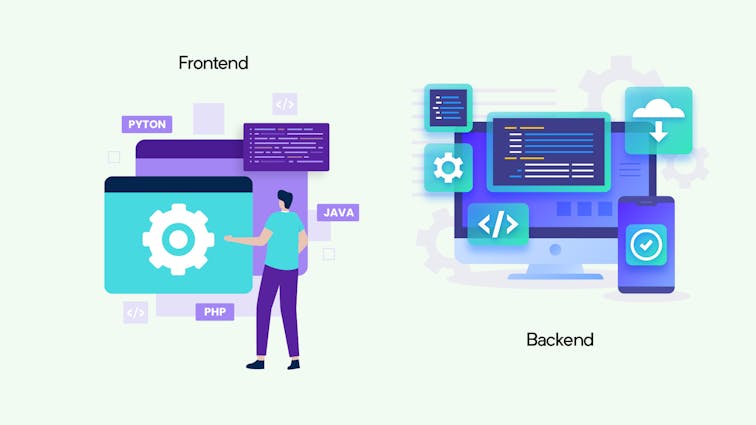
How to Implement Headless Commerce?
Implementing headless commerce can seem daunting, but by following these steps, you can transform your business for the better:
- Evaluate your needs: Assess your current eCommerce platform and identify the areas where headless commerce can improve performance, usability, and customer experience.
- Choose the right technology stack: Research and select a frontend framework (e.g. React, Angular, or Vue.js) and a backend eCommerce platform (e.g. Shopify, BigCommerce, or Magento) that best align with your business goals and requirements.
- Develop the frontend layer: Design and build a modern, responsive user interface optimized for various devices and channels. This process will require close collaboration between your designers, developers, and product team.
- Integrate the backend system:
Connect your chosen backend eCommerce platform with your frontend application using APIs, ensuring seamless data exchange between the two components. - Test and optimize: Perform thorough testing of your headless commerce solution, addressing any bugs and optimizing both frontend and backend performance.
- Implement analytics and monitoring: Set up analytics and monitoring tools to measure key performance indicators (KPIs) and gain insights into user behavior, allowing you to make data-driven improvements.
- Roll out and continuously improve: Launch your headless commerce solution and regularly review its performance, making adjustments and enhancements as needed to stay ahead of the competition.
Choosing the Right Headless Commerce Platform
There are several headless commerce platforms available on the market, each with its unique features and capabilities. When choosing the right platform for your business, consider the following factors:
- Ease of integration: Look for platforms that offer easy integration with your chosen frontend framework and other essential tools, such as payment gateways, shipping providers, and ERP systems.
- API performance: Since APIs are critical to the success of headless commerce, evaluate the performance, flexibility, and reliability of the platform’s APIs.
- Customizability and extensibility: Choose a platform that allows for customization and easy extension of its core capabilities to help your business stand out and meet evolving needs.
- Cost: Consider the cost of the platform, including setup, subscription fees, and any additional costs for integrations or add-ons, ensuring it fits within your budget while providing the features and functionality you require.
- Support and documentation: Opt for a platform that offers comprehensive documentation and responsive support to help you swiftly address issues and make the most of your headless commerce solution.
- Security and compliance: Ensure the platform adheres to industry-standard security practices and complies with relevant regulations like GDPR and PCI DSS to protect your customers’ data and your business reputation.
Successful Headless Commerce Examples:
Here are some examples of brands that have successfully implemented headless commerce, showcasing the potential it has for businesses across industries:
1. Rapha:
This cycling apparel and accessories brand leveraged headless commerce to deliver a fast, scalable, and easy-to-navigate website, resulting in improved conversion rates and customer satisfaction.

2. Princess Polly:
An Australian fashion retailer, Princess Polly adopted a headless commerce approach to create a lightning-fast, mobile-first eCommerce store, which led to increased mobile revenue and enhanced user experience.

3. Big Green Egg:
The popular outdoor grill manufacturer used headless commerce to streamline their online ordering process, improve product visualization, and deliver a consistent experience across various channels, resulting in increased sales and brand loyalty.

The Future of Headless Commerce
As more businesses recognize the potential of headless commerce, it’s poised to become an integral part of the eCommerce landscape. Some key trends and developments to watch for include:
- Increased adoption: As the benefits of headless commerce become more widely understood, more businesses will adopt this approach, leading to greater competition and innovation in the market.
- Improved tools and technologies: With the growing popularity of headless commerce, we can expect advancements in the tools and technologies that support it, making it even easier to implement and manage.
- AI-powered personalization: Integrating artificial intelligence and machine learning into headless commerce platforms will enable more sophisticated personalization, delivering more relevant and engaging customer experiences.
- Greater focus on omnichannel experiences: As businesses strive to create seamless customer experiences across various channels, headless commerce will play a critical role in facilitating this, allowing brands to adapt their online presence quickly and efficiently.
- Voice commerce and IoT integration: With the rise of voice assistants and the Internet of Things (IoT), headless commerce will enable businesses to easily integrate these technologies into their eCommerce strategy, offering customers new, convenient ways to engage and transact.
- Progressive Web Apps (PWAs): PWAs provide a native app-like user experience on the web, and their adoption will likely increase alongside headless commerce, further enhancing speed, performance, and user experience on eCommerce websites.
It is Time to Go the Headless Commerce Way
Whether you are an experienced company with an established infrastructure or in the process of building your enterprise architecture, a headless commerce approach is a great fit.
As business processes become more complicated, it is time you step up, adopt modern technologies and differentiate by experience rather than price, to stand out among competitors.
Adopting such technological advancements in business might seem difficult, but it can be easily integrated by launching your online business using aasaan. Plus, it is effortless, convenient, and cost-effective. Build and scale your business the aasaan way.
Conclusion:
In conclusion, headless commerce presents a revolutionary approach that can help businesses stay agile and best serve their customers in today’s ever-changing digital landscape.
By leveraging the benefits it offers such as easy integration, API performance, customization, cost-effectiveness, stellar support, and heightened security, businesses can better focus on delivering exceptional shopping experiences and overcoming traditional eCommerce limitations.
To adapt to the dynamic eCommerce environment and keep up with the latest trends, businesses must strongly consider adopting a headless commerce approach.
Teaming up with the right platform, like aasaan, can ensure a smooth transition and friction-free digital transformation, ultimately leading the way to successful business growth and a satisfied customer base



